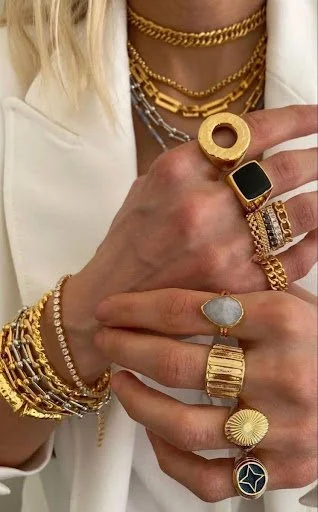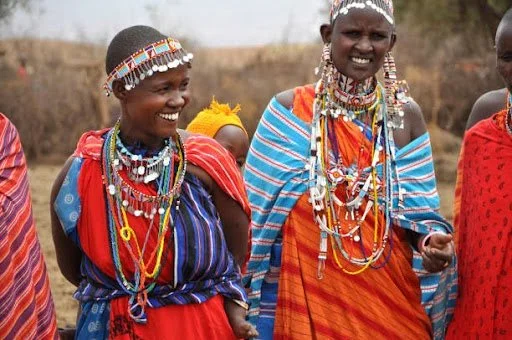Details and Designs: Small Details, Big Impact
Written by Giselle Franco
Fashion trends come and go, but when looking at the history of what’s been popular throughout the years, there’s always one consistent staple. That staple is accessories. From the beginning of recorded fashion history, accessories have been used to elevate looks and bring them to their fullest potential. In ancient times, people would use items like shells and animal teeth to decorate themselves. They made jewelry with such items that were worn in the form of necklaces, earrings, bracelets, rings, and anklets. In ancient Rome, powerful, influential people would wear rings to signify their high social status. In the 1920s, women would wear headbands as a stylish statement, and men would wear neckwear such as bowties and sleeve garters as theirs.
These are only a few examples of how accessories have been used to elevate looks throughout history. Nowadays, accessories are used all the time, in all sorts of ways, in all kinds of different cultures. In Western culture, accessories like bracelets, necklaces, headbands, scarves, rings, and bags are common. People of all ages wear these accessories everyday to add excitement to their outfits. For example, if someone feels like their outfit is cute, but maybe a little boring, adding necklaces and chunky rings will immediately advance the look, making it feel more complete as a whole.
In many college students, accessories are used when students are too burnt out from studying or exam season to put on their best outfit. Accessories can help students feel their best about their look, even if the outfit is more casual..
In other places of the world, accessories are used for both artistic and cultural purposes. In some African countries, accessories are used to express social status, while also acting as both traditional symbols and modern fashion statements. The Maasai people from Kenya and northern Tanzania use beaded necklaces to symbolize how much wealth and status they have. A larger quantity of bigger beads signifies that a person is wealthier, and most likely of a high societal status. In many South American countries, accessories are used to represent family and a pride for one’s culture. Many South American citizens wear jewelry from their family members, representing love and loyalty to their bloodline. A lot of the women also make their own jewelry, using handwoven strategies and textiles to make accessories like bags, hats, and belts. Several use ancestral backstrap weaving techniques that are often native to their land.
Fashion trends are forever shifting, but accessories have always remained. Whether it be for cultural or leisurely purposes, accessories have always been crucial in our sense of style. . Why people wear accessories is ambiguous, but the core idea behind accessories is that they have multipurposes, are flexible, and will always, without a doubt, complete a look.
Edited by Gabi Beard, Ana Massoglia, & Safa Razvi




